Behind the Image: May 2023

Soon the snow will come, but recent rain has meant the streams of the Mt Buffalo plateau are running through a lush landscape.

Soon the snow will come, but recent rain has meant the streams of the Mt Buffalo plateau are running through a lush landscape.
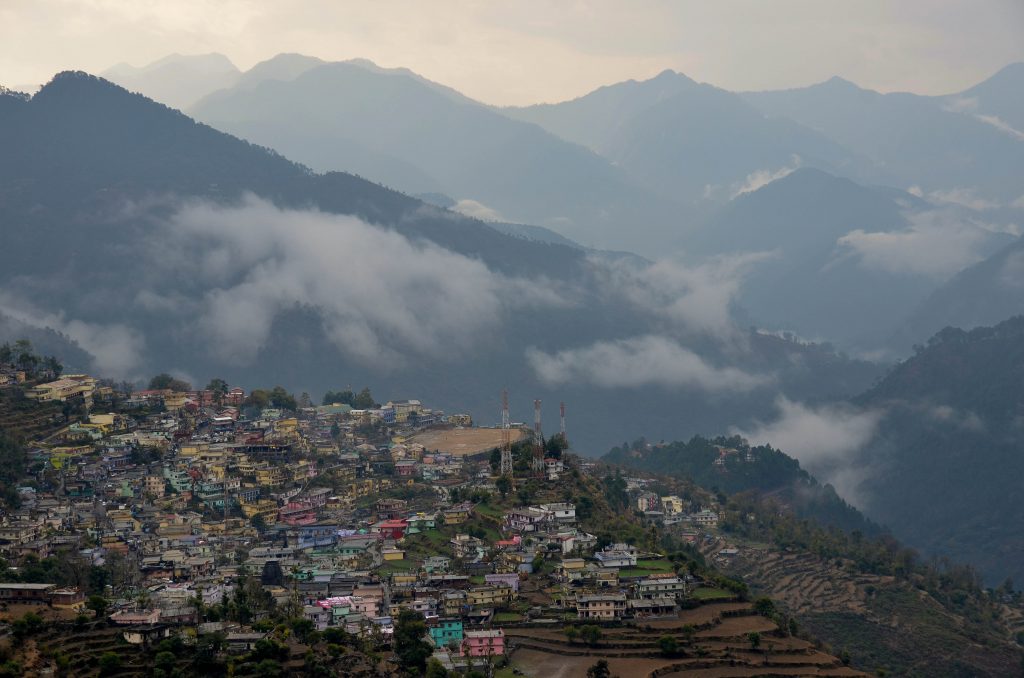
There’s a phrase that I’m hearing with increasing regularity: inclusive community engagement. To be sure, the phrase doesn’t always use these exact words, but the phrase acts like an umbrella in practices related to community-led actions for sustainable landscapes. I hear practitioners talk about it and I hear travellers talk about it.
Like lot’s of ideas and broad umbrella concepts, it’s always good to take a step back to reflect on what the phrase means and how it can be used in different ways with different meanings. A beginning point is with the ‘revolution of ideas’ that has been occurring over the last 40 years or so.
There have been multiple drivers of this revolution. Perhaps one of the most significant has been a shift in understanding knowledge. Without going into detail, we have entered what social scientists call ‘post-modernity’. There are multiple characteristics, but for us the important characteristic relates to knowledge and experiences. We now recognise that there are multiple forms of knowledge and experience, not just that of science or technical management or the expert.
In turn, we’ve seen a shift in thinking about communities, community development and community resilience:
A shift in the role of expert knowledge. Technical knowledge is important, but it is seen as one way of looking at things.
A recognition that there are multiple ways of experiencing things. This means people experience things differently based on all kinds of characteristics – gender, age, ethnicity, education, health, income etc.
A movement to somehow, in some ways, trying to harness these 2 things in the quest for resolving issues, implementing change, developing and rolling out programmes and, ultimately, for community resilience.
Those three words ‘inclusive community engagement’ have been impacted by this revolution of ideas/thinking.
Inclusive has moved from:
Not being part of the language, to
An expert making decisions on behalf of people/groups, to
Experts recognising that some groups need to be consulted, to
Professionals recognising and understanding the nature of the diversity of people’s experiences, fears, dreams, aspirations and knowledge and ensuring that programmes, projects, interventions etc are representative of this so they are inclusive.
Community has moved from:
A geographic place name inhabited by people, to
A complex site of social, economic and political processes impacting on people and groups differently. It has its own dynamic, but there are socio-economic and political processes beyond the reach of the community that will and do impact.
Engagement has moved from:
Experts making decisions for people/groups, to
Experts consulting with people/groups, to
Different groups being brought together around the table, to
People collaborating and co-creating – mutually identifying issues, concerns and possible solutions.
Of course, social change is a messy thing, but one thing is certain – these changes have provided a space for having conversations with communities. I don’t mean this in a ‘let’s talk about things’ way that ignores the ways some voices get heard and others don’t or are marginalised. I mean it in a ‘Let’s get creative and look for transformative social change for sustainable communities and landscapes’ kind of way, where we all recognise our optimal ignorance and share experiences, insights and ideas to frame actions.
It’s this latter meaning that informs my ideas, practice and experience.
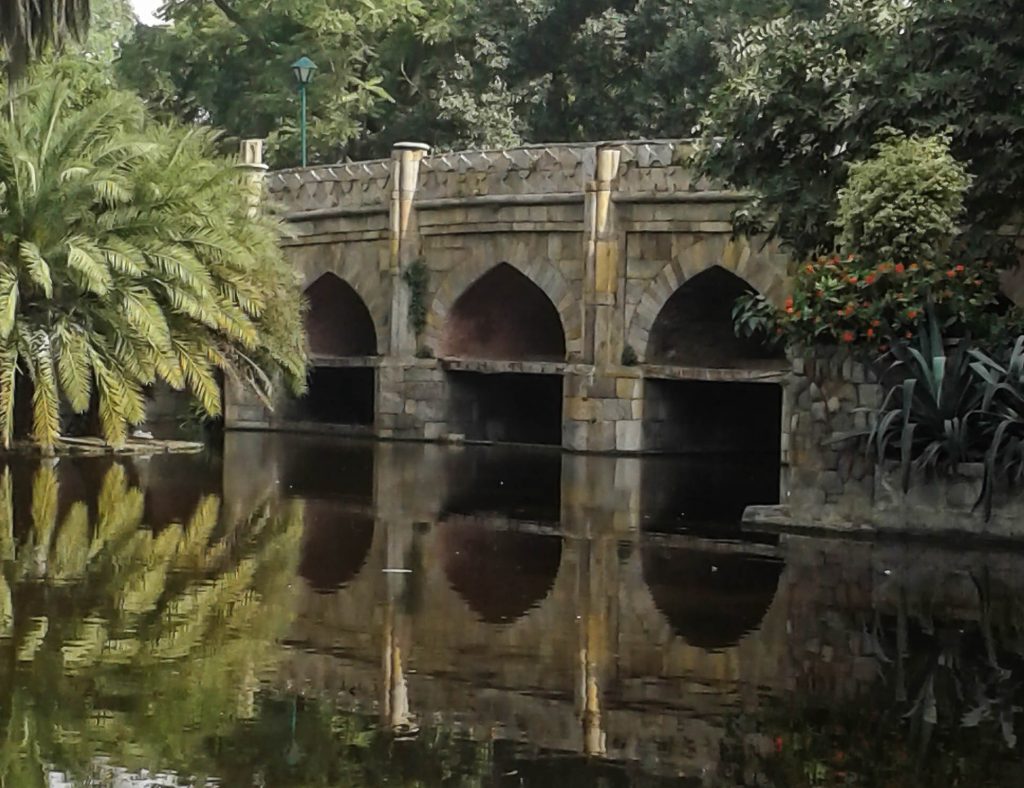
Everyone lives their lives with both civilisational and Civilisational markers. It’s what makes us human after all – the civilisational markers of values, culture and everyday life sit with the Civilisational markers of buildings and other material outputs of our lives. The thing about being a visitor or even a long-term outsider is that these markers come to represent very specific parts of an experience and an engagement. For me, these civilisational and Civilisational markers provide strong attachments to place and the country.
Seeing the 15th century tomb of Mohammad Shah Syad through the fog of a winter’s morning in Lodhi Gardens in Delhi is a sight I’ve seen many times over the years. There is something special about it, at least to my mind (and, I guess, through that, my experience of Delhi).
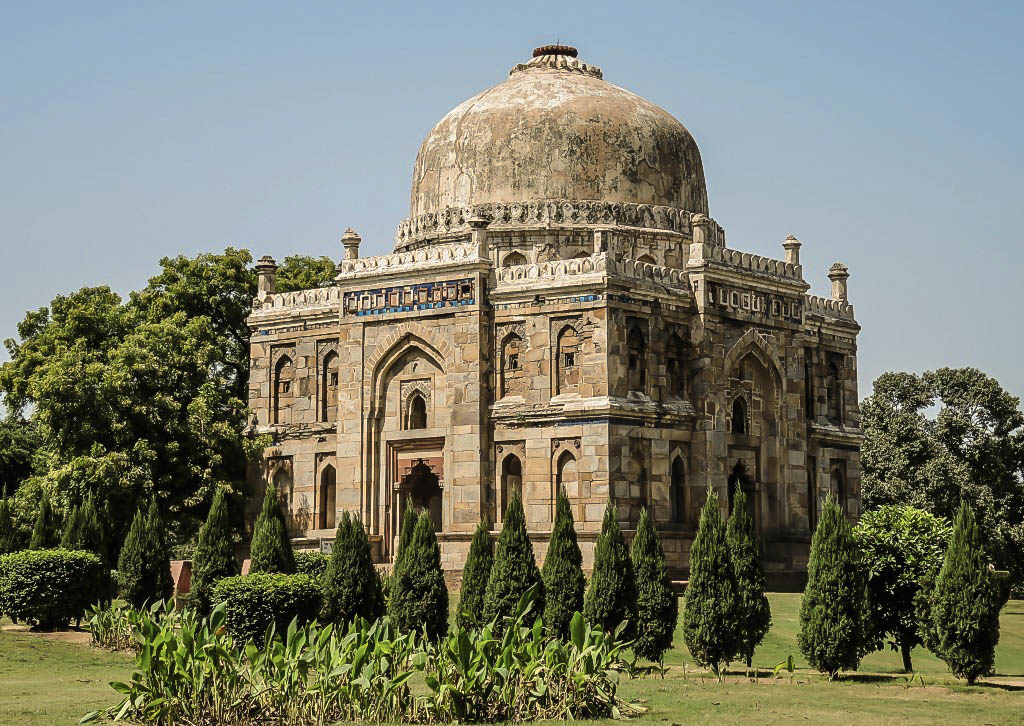 It represents some of the great things about Delhi – its gardens and green spaces, the fact that you have these monumental sites all over the place and they are ‘just there’, and you can see the changing nature of Delhi, and through these eyes, perhaps start to see the changing nature of India. The middle-classes walk, the homeless move on, the Delhiites read papers or do yoga or exercise in this most public of places. And you can’t forget the dogs, with their warm overcoats to keep the cold at bay (more comfortable than the homeless who inhabit the Gardens during the night but without the luxury of overcoats) – so many dogs being led by dog walkers, by servants and by owners.
It represents some of the great things about Delhi – its gardens and green spaces, the fact that you have these monumental sites all over the place and they are ‘just there’, and you can see the changing nature of Delhi, and through these eyes, perhaps start to see the changing nature of India. The middle-classes walk, the homeless move on, the Delhiites read papers or do yoga or exercise in this most public of places. And you can’t forget the dogs, with their warm overcoats to keep the cold at bay (more comfortable than the homeless who inhabit the Gardens during the night but without the luxury of overcoats) – so many dogs being led by dog walkers, by servants and by owners.
Was it really that long ago that I was playing football on the lawns of Lodhi Gardens with our son and daughter, then probably about ten and seven?
My India stories are a bit like that – threads of timelessness and threads of change, coming together at these kinds of locations, and coming together through these inhabitants of the city – those who live, survive, work and those who try to and hope to.
These threads of continuity and change, Civilisational and civilisational markers, are seen in the Lodhi area – they unfold as you walk around the gardens and then in the area beyond – beyond to Safdarjung’s tomb (built in 1754), to the India Habitat Centre (conceived in 1993) via Jor Bagh to the India International Centre (completed in 1962) and Khan Market (from the 1950s).
One of the constants of Lodhi Gardens is of course people living their everyday lives. Here, at weekends, can be found picnickers, sometimes with only a rug and a tiffin box, often though extended families enjoying some winter sun (or summer shade), loaded up with rugs, soft drink, copious food in storage boxes and tiffin tins and, often enough, the radio or the CD player.
Each day the paths are walked and run on as various Delhiites and expats come to the place to get some exercise. Walking often consists of two people, talking and discussing whatever it is they discuss – friends, business, politics, the state of the world, the state of India, the state of Delhi, the state of whichever India Premier League cricket team. All are topics to be covered.
And of course, the active can be found in various cricket matches which are always happening, no matter what season. Young men and boys trying to hit the ball out of the park, or trying to bowl the ball at express speeds. India has a women’s cricket team but I’m not sure where they learn their craft – I’ve only ever seen boys and young men in parks and wherever there is spare ground – including various fallow fields in villages across the country, where invariably I would be part of yet another Australia/India cricket match. Over the years my main challenge has been remembering who the latest Australian cricketers are so I can become one of them.
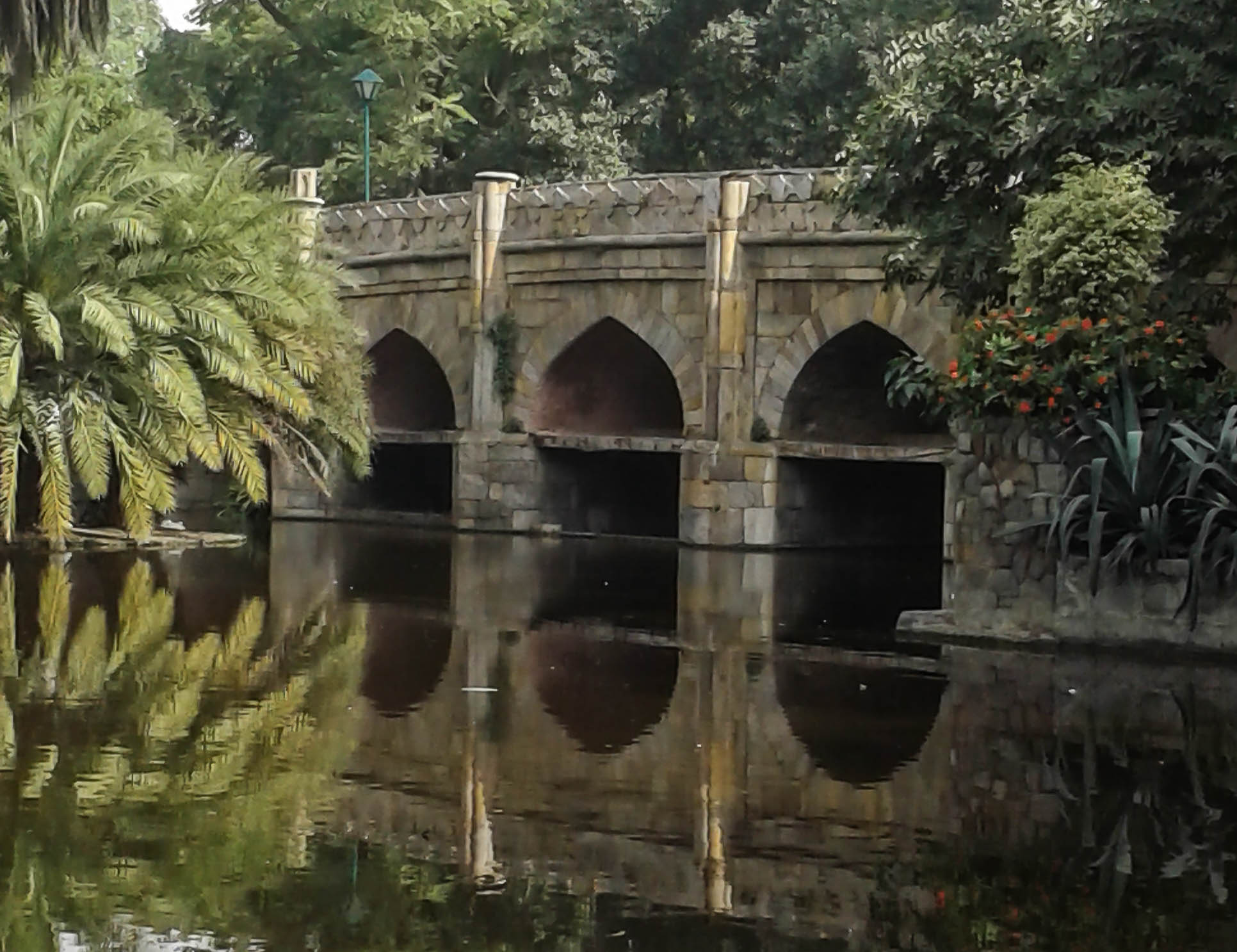 And then there are the groups who meet in the gardens – sometimes to discuss whatever is headlining in the newspapers, sometimes groups of women use the Gardens to discuss gender and develop their networks. Then there are the groups who are doing their yoga breathing, or having laughing therapy.
And then there are the groups who meet in the gardens – sometimes to discuss whatever is headlining in the newspapers, sometimes groups of women use the Gardens to discuss gender and develop their networks. Then there are the groups who are doing their yoga breathing, or having laughing therapy.
I remember, as Delhi’s pollution was getting progressively worse, people would research the air quality in Lodhi Gardens, on the basis that if it was bad here, it would be very bad elsewhere. Almost invariably, in winter, it was very bad – the green spaces couldn’t hide the fact that fog, diesel particulates, sand and dust come together in a very unhealthy mix across the capital (and throughout India unfortunately).
So many civilisational markers, sitting side-by-side Civilisational markers. Here in the gardens are the tomb of Mohammad Shah Syed, the third ruler of the Syed Delhi sultanate who came to power in the early fifteenth century, a mosque which is thought to have been constructed in the eighteenth century, the Baba Gumbad (a significant gateway to what is thought to be the Baba Gumbad mosque, found a little further away). Immediately to the north can be found the Seesh Gumbad, thought to be the tomb of the founder of the Lodhi dynasty of the fifteenth century. The tomb of Sikandar Lodhi who died in 1517, is also to be found here.
This joining of civilisational and Civilisational markers is not that unusual across India. The country has its fair share of cultural world heritage sites – 29 or so, spread across the country. This is in addition to seven natural sites and one mixed site.
The idea of world heritage is focused on global responsibility to support and protect the conservation of world heritage sites in a country. Importantly, the idea is saying that it’s not just for the country to look after things – if something is world heritage, it means there is a universal value and therefore a global responsibility for its protection. So the country protects its world heritage sites, its national sites and its local sites as Civilisational markers, but surrounding them are the everyday lives of Indians – the civilisational markers. It’s a difficult balancing act.
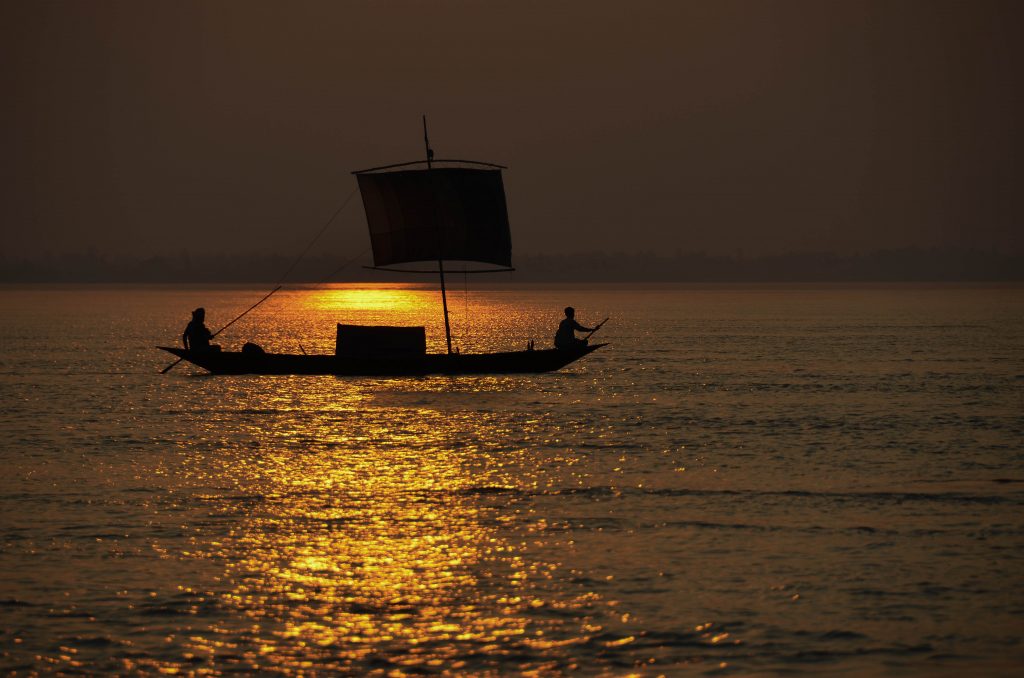
This image (above) is taken on the Brahmaputra River, on the Bangladesh/India border. These two fishers are going back to home on a Char (pronounced ‘chore’), a river island that gets formed by the power of the Brahmaputra depositing sediment and building islands. The river builds, but the river also takes away, and in floods chars are often eroded and/or destroyed. These fishers, and those living on chars have very precarious lives and livelihoods.
I was on a boat going to a char to visit one of the NGOs who work in the health field – who bring a hospital boat to chars to provide health care to those who live there. When I was there, an ophthalmologist was conducting surgery on cataracts to restore sight.
Every now and then when you’re in the field, you are privileged to see what happens as one of the ‘thousand little stories of resilience’ that occur with little fanfare or recognition. It was quite extraordinary to see the impact of the NGO and to hear stories from the chars and from the boat.
This image is part of one of those stories.

The Rishi Ganga gorge is etched into the history of Nanda Devi and its sanctuary in the Indian Himalayan state of Uttarakhand. Nanda Devi (7816m) and its sanctuary, massive mountains making access to Nanda Devi complex, is now a National Park and World Heritage area. The Rishi Ganga gorge provides a sense of Nanda Devi’s protective fortress. Nanda Devi is at the top left corner of the image.
I was fortunate to be in the area with a group from Lata village, at the gateway to the area. The village’s connection to the area and to Nanda Devi goes back centuries.
On a personal level, this particular trek for some reason reminded me of reading Howard Newby’s book ‘A Short Walk in the Hindu Kush’, a book that was so influential in developing my interest in mountains and their people, and a professional life at the intersection of communities and landscapes.
Many aspects to life are played out in public and observation is a very powerful skill to have. To my mind, the very act of observing (rather than looking/seeing) means you’ve begun the process of engaging with place and everyday life. For me, the difference between seeing and observing is found in asking yourself two key questions: Why is that happening? How did this occur? By asking those kinds of questions, you start to dig below the surface of what you see. It’s through this you get to add to your own stories of a place, your own experiences and your own knowledge of self and others.
As an aside, this is why I’m not keen on listicles and ‘1001 things to do in (.wherever) before you die’ kinds of lists. I have a personal concern with bucket lists – as if they are the ultimate definer of an experience, a life. Too much time marking things off lists means too little time getting to know a place, its people and its everyday life. Quiet reflection and observation (and most importantly, understanding of some kind) are too often subsumed by the next thing to tick off.
The streets are the point of intersection of people’s lives, relationships, networks and interactions and the vignettes of people’s lives which unfold tell a lot about the pulses of everyday life, well away from the our own assumptions But this is not that unusual – public spaces (parks, roads, wastelands, forests for example) provide glimpses into the everyday life of place. You just need to spend the time to observe and do, rather than rush by or through.
This post was also published at localslowtravel.com
Over the last month or two I’ve had a various conversations with people about community resilience. These are focused on ideas of resilience being tied into either economic or psychological states, the expert knowledge of various groups – including community practitioners and bureaucrats – and the importance of getting ‘community’ on side.
While there’s quite a lot to unpack here, for this post I’ll just focus on how 4 points sum up how I see it.
As a professional working in the community resilience space, I don’t own knowledge and experience. I have different assumptions, ideas and experiences that I bring to the table, along with others. Therefore, a foundational part of this thinking is that I have things to contribute, and with others I can contribute and collaborate in the search for community resilience. Disagreement or different perspectives are important parts of the mix.
What this means hopefully is that we move away from that professional model that assumes professional, technical knowledge which we use to ‘create’ resilient communities.
My own ideas are influenced by the following:
Rural sustainability, landscape sustainability and community rights are the core of what I do. I’ve worked on all kinds of issues and in all kinds of landscapes – national parks, wildlife and endangered species protection, tourism, world heritage, collectives, fishing, nomadic herders, the Himalayas, water, the great rivers of South Asia, forests in various places. My beginning point has always been with people, their rights and their landscapes. But this 30 year practice had to start somewhere.
I still remember the time I really began to understand things. As a young(ish) social scientist I sat at my desk in my accommodation, a small hut in a tiger reserve. My assignment was to analyse the impacts of wildlife on the people who live on the outskirts of the reserve.
At the time, the orthodox thinking was that tigers and their conservation were the focus. Some thought (and some still do) that tigers were the only focus – and they therefore took precedence over the rights of local communities.
Others thought that while the tigers were a priority, local communities needed to benefit from their protection. Usually, this was framed in terms of livelihoods and economic benefits. So the thinking here was that local communities shouldn’t wear the economic costs of protecting tigers.
At that time, I knew I sat with the second view. But I didn’t quite know what that meant.
I was about to write up the day’s notes. It was quite late because there had been a festival at a nearby village and I had gone there to understand some more about the ways local people live. The festival was a celebration of the forest and so it was an important one to get a sense of people’s connections to their forest, their landscapes – I knew these run deep. It had been a full moon (hence this particular festival), and I’d returned to my room along that forest path by its silver light. The sounds of the festival reverberated around this vicinity. My fellow walkers on the path were coming from and going to the festival, some dressed in their best clothes for the celebration.
My thinking about this assignment, gained from far-away Australia and framed by Western values of national parks, tiger protection and conservation, was that things needed to be done to protect the reserve, the forest and the national parks from the impacts of people.
As I sat at my desk, the yellow light of the kerosene lamp lighting my notebook, I stared out the window at the blue-bucks grazing on the grasses, and I thought two things in quick succession. The first was: ‘This is what fieldwork is like’ – a somewhat romantic notion of the field that had been instilled into me from the early days of studying, reading reports of fieldwork by anthropologists and, of course, the totally romantic scene that I was part of – village festivals, jungle, kerosene lamps, wildlife, saving the tiger.
The second thought was my ‘ahah’ moment. I thought: ‘It’s not the wildlife or the forest that needs protecting, it’s the rights of local people.’
It was at that point I began to really, really understand. I understood that local people live with wildlife and conservation initiatives and that they come at a cost to them.
I understood that the cost of conservation is not shared equally, that while we may want to, and should want to, protect tigers and forests and other species, local populations often bear the cost – a cost they can ill-afford. This cost is well beyond the economic cost, though that can be substantial. It’s a cost of cultural and historical connections to landscapes, usually shaped by generations.
Economics doesn’t cover access to medicinal plants. It doesn’t cover the locations in forests where dead ancestors still provide safety and a surety of the forest. It doesn’t cover the local deities that are tigers, worshipped to ensure that local people are protected in the forest. Most of all, it doesn’t cover the rights of local people to all of the above, their rights to make informed decisions and their rights to have their voices heard across tiger landscapes and their conservation efforts.
And I understood that it’s very simple to see black and white solutions.
As a result, and perhaps most of all, I understood that life is complicated. Seeing tigers in the wild is spectacular. Seeing them on posters imploring donations to save them, doesn’t do justice to the complex economic, political, cultural and historical connections that people have with their forests, their landscapes and their livelihoods. All the tiger ecology in the world will not save them until all these other things are understood, integrated into protection and the rights of local people are protected. Most of all, I understood that doing this required collaboration and cooperation.

“Why isn’t the Mirka here?”
I was in a valley deep within the Himalayas, discussing my list of local endangered animals with a group of herders.
“They’re very difficult to find. But you can if you follow their trails.”
The comment certainly didn’t have all the herders nodding in agreement- there was plenty of animated disagreement and some scoffing laughter.
Nevertheless, the herder stood by his question. There was just one problem- I had no idea what a Mirka was. I asked the assembled group to explain the term.
‘Yetis’ one of the other herders replied.
For me, this interaction highlights something that goes well beyond the work that drew me to this valley in the first place. This was the moment I realised the Yeti represents two inherently connected worlds – wild places, and the stories of ‘wildness’ that go with them.
This herder had summed up a very complex relationship in one sentence.
That was twelve years ago. Over my time working in the Himalayas, I’ve heard other stories of Yetis – sometimes told to much laughter, sometimes to serious nodding. Irrespective of the reaction, local people thought it important enough to mention the Yeti in discussions about establishing sustainable futures for their valleys and landscapes.
It was around the time of my discussions with the herders that Reinhold Messner wrote his book My Quest for the Yeti. His mission in part was to prove the existence or otherwise of a strange creature he had encountered in a Tibetan forest.
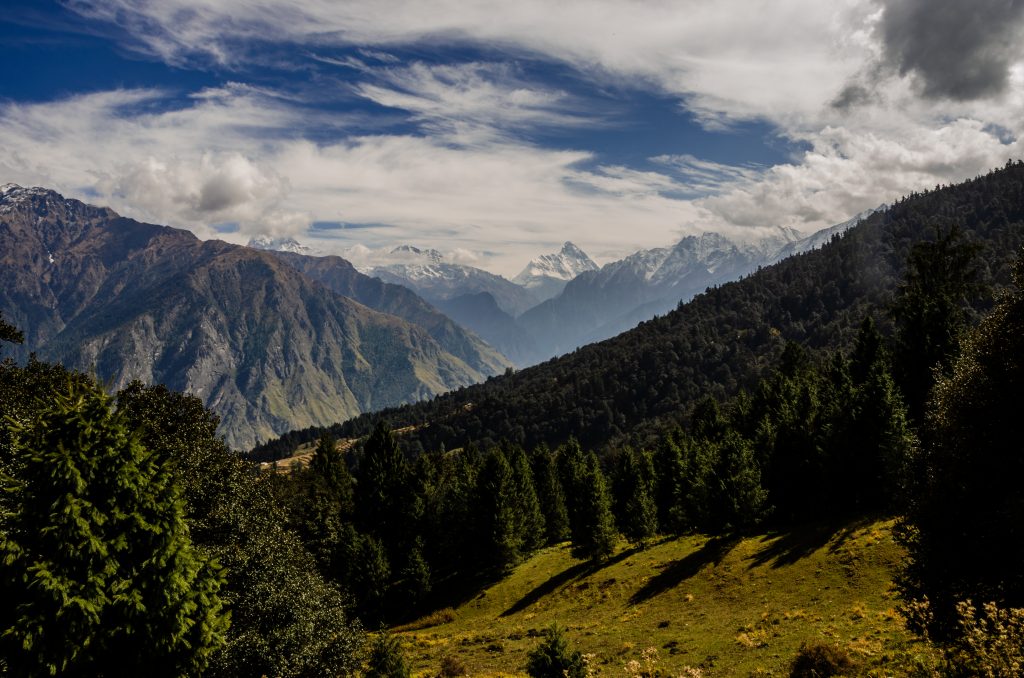
Trying to answer the question ‘Does it exist’ is nothing new. To my mind though, this is the wrong question. The bigger and more important question? ‘What if the things that gave rise to the possibilities of its existence no longer exist’?
What happens when the biological and ecological wildness that could hide the Yeti – make its existence a perpetual ‘maybe’ – start to disappear? This is a question that in many ways goes to the heart of the protection and conservation of mountain landscapes.
A related question: what if the rich cultural traditions that house Yeti stories are lost, because of social change, modernisation and science ‘proving’ it doesn’t exist? This is a question of the centrality of cultural diversity and cultural traditions to the resilience of mountain communities.
The Yeti is a window into the diverse and rich cultural connections people have with ecosystems and landscapes in the Himalayas. The legend’s gradual disappearance mirrors the gradual disappearance of these connections.
To look through this window, to discover the links and the pressures, you need to follow the Yeti’s trails.
Over the last few years there’s been increasing debates in some quarters about the rights of nature and the feasibility of bestowing ‘personhood’ to landscapes or parts of landscapes. This is something that has many parts. It can be about legal protections, recognition of the ways First Nations people view landscapes or the natural world or a deeper ethical position on the rights of nature (even though, for some, bestowing personhood seems to contradict the idea of nature’s rights).
They’re interesting debates with some contradictions and limitations. However, they do share a common attempt to strengthen the rights of and protection of nature. You can see an interesting recent piece from The Guardian, written by Patrick Barkham, here.
*This is also published at localslowtravel.com